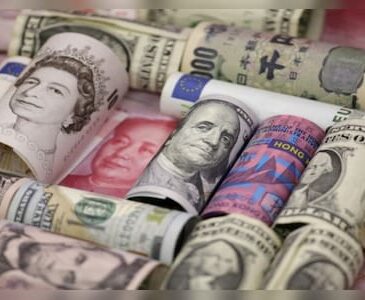
Federal funds futures currently price in no rate cut in March and a lower than 50% chance of easing in May, according to LSEG’s rate probability app, after the consumer price index, or CPI, in January gained 3.1% from a year earlier, versus an estimated 2.9% rise.
“Fed officials have commented they are waiting for data to show inflation is coming and will stay down – this report undermined that assumption,” said James Kniveton, senior corporate FX dealer at Convera.
“Fed expectations are pushing up against Japanese intervention expectations, and for now who the winner of this contest will be remains unknown,” he added.
Traders will watch to see if Bank of Japan Governor Kazuo Ueda adds his voice to warnings about a weak yen’s impact on the economy, and will also want to hear how Fed speakers this week interpret the inflation data, Kniveton said.
Japan’s top currency diplomat, Masato Kanda, said on Wednesday that officials are “closely watching FX moves with a sense of urgency,” and “will take appropriate actions if needed.”
He said “recent moves have been rapid,” and “could have an adverse impact on the economy.” Current yen weakness “reflects both fundamentals and speculative moves,” he added.
The dollar-yen pair tends to track long-term U.S. Treasury yields, which surged overnight and then pushed to a fresh 2-1/2-month peak of 4.33% on Wednesday.
The dollar has added about 10 yen in price since the start of this year.
Meanwhile, the dollar index — which measures the U.S. currency against six major peers, including the yen, euro and sterling – traded just below Tuesday’s three-month high of 104.96.
The euro was steady at $1.0710, after dipping to a three-month low of $1.07005 overnight.
The British pound was little changed at $1.2594, after dropping about 0.3% on Tuesday. That was well above recent lows though, with robust UK economic data suggesting the Bank of England will be slower than major peers in cutting rates.
The Australian dollar languished near a three-month low of $0.6443 reached overnight, last trading at $0.64545.
Leading cryptocurrency bitcoin regained its composure after briefly slumping from around $50,000 to as low as $48,325 overnight, before last trading at $49,560. It had surged close to 31% from a low on Jan. 23 to a more than two-year peak at $50,385, hit on Tuesday before the U.S. CPI data.
“Just as bitcoin managed to climb above $50,000 for the first time since 2021, it had the rug pulled from underneath it by a nasty U.S. inflation report,” Craig Erlam, senior market analyst at OANDA, wrote in a report.
“While damaging in the short run, I don’t think it will dampen the mood in the crypto space too much.”


